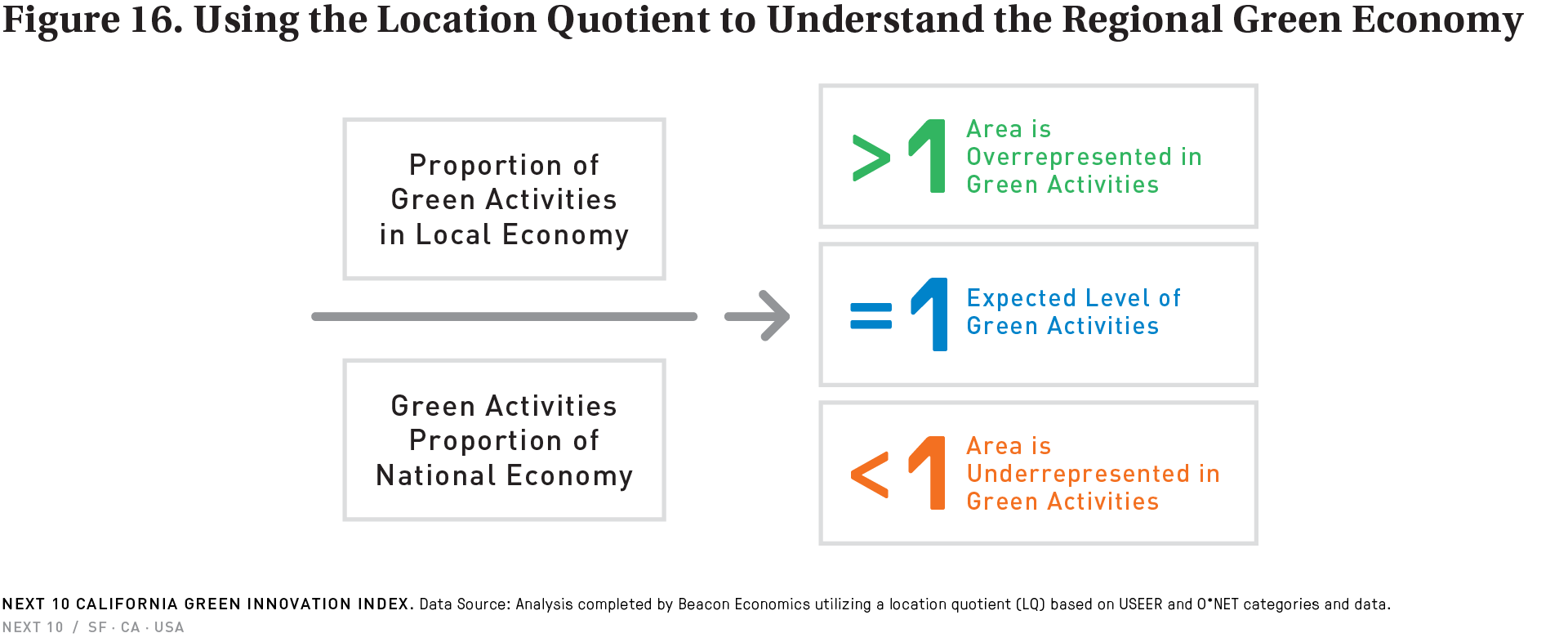Background
- State and local economies are very much at different points in the clean energy economy transition. To better understand areas of specialization within clean energy economy industries and occupations, this analysis utilized a location quotient (LQ)30 based on USEER and O*NET categories and data. Location quotients are key economic benchmarks that capture how overrepresented an economy is in an activity, compared to the national economy. It is produced when the local proportion of an activity, in this case green jobs, is divided by the proportion that activity commands of national activity. A location quotient higher than two indicates that there is twice as much employment in a sector as one would expect based on national employment, while an LQ of one indicates an expected level in a sector and .5 suggests half as much. This analysis examines how dense Green Industry Jobs and Occupations are compared to the average American economy. Data in these analyses comes from prior to the pandemic—2018 in the industrial analysis and 2019 in the case of occupations—a time that allows for a more stable snapshot of the state of the Green Economy.
30 Very often, economists talk about location quotients in terms of specialization, with higher LQs suggest that an activity is exported. This logic does apply to exportable green jobs, like those in Research and Development or manufacturing, but is less appropriate when discussing locally-serving industries like power generation. Even in the latter case, a high LQ in a green sector (e.g., solar) is a positive sign from the standpoint of an area’s green energy transition.
More About
Greening California’s Workforce
Related Content
